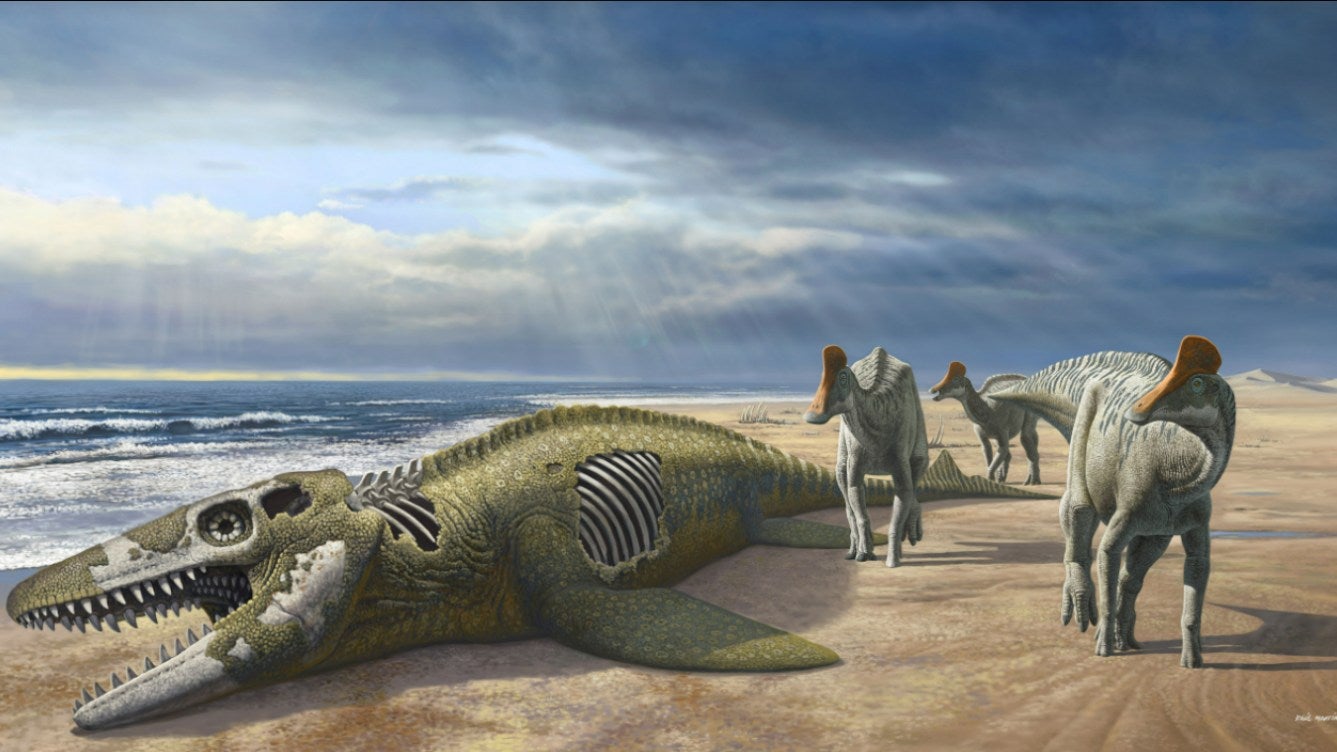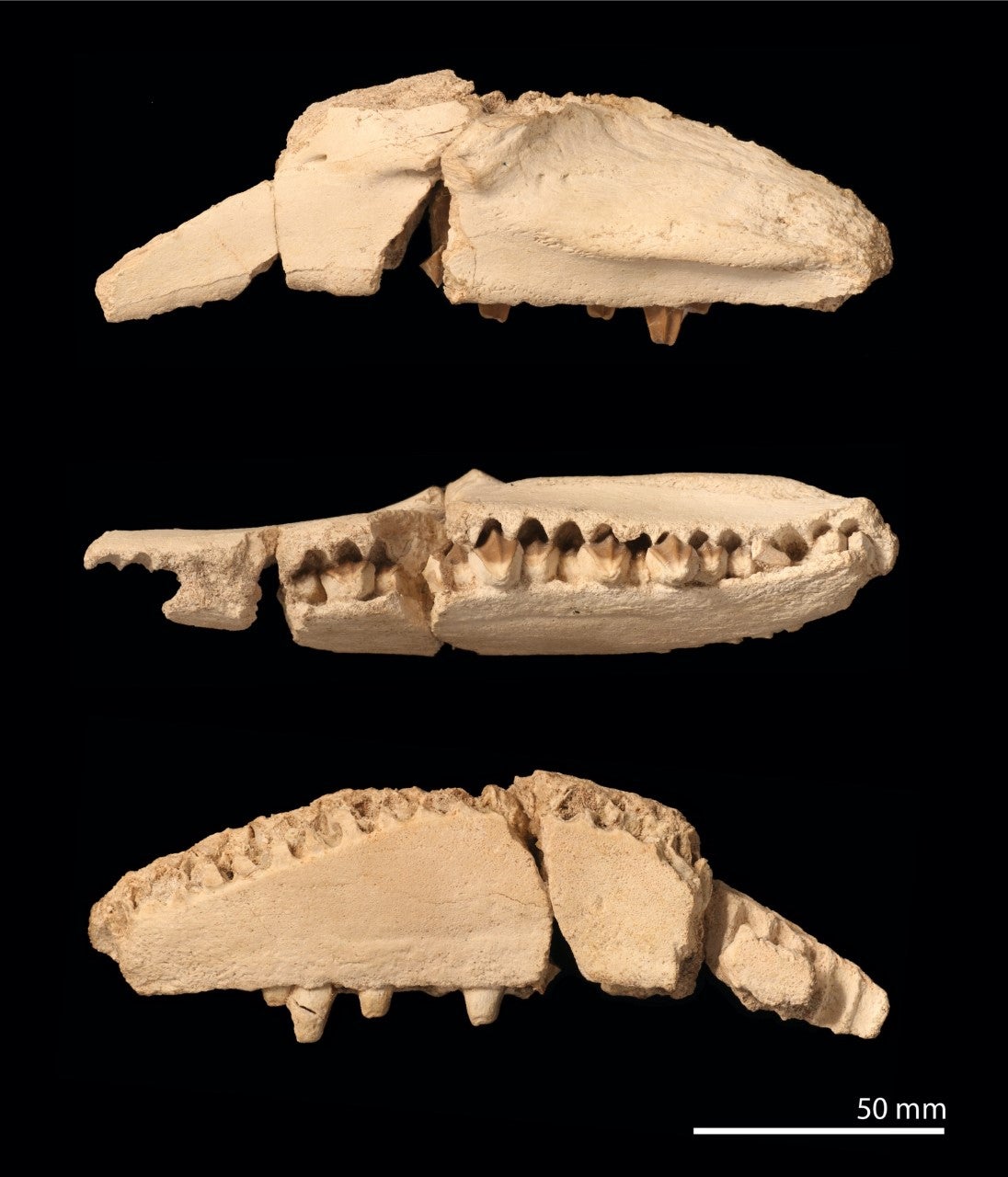Duck-billed dinosaur fossil was found in Morocco, leading experts to think it could have swam there from Eurasia
Alexander Butler

The fossilised remains of a duck-billed dinosaur was discovered in Morocco
(University of Bath/PA)
A land-based dinosaur may have swam hundreds of miles from Eurasia to Africa, according to a “perplexing” discovery made by scientists.
Researchers found the fossilised remains of a duck-billed dinosaur in Morocco, weighing about 250kg and measuring between three and four metres.
The creature, also known as a hadrosaurid, emerged in North America between 100 million and 66 million years ago and migrated into Europe and Asia when the continents were connected.
But the species should not have been able to reach Africa, as the region was left “floating alone in the ocean, an island continent like modern-day Australia” following the break up of supercontinent Pangea.
This shows that “duckbill dinosaurs, evolving long after the land connections had been broken, somehow managed to get to Africa”, perhaps by swimming, according to the study.

Fossils of the duck-billed dinosaur were found in Morocco
(University of Bath/PA)
Dr Nicholas Longrich, from the University of Bath and one of the report’s authors, told The Times: “The anatomy of the new duckbill closely resembles that of European species, suggesting that the duckbills swam or floated across several hundred kilometres of open water to colonise North Africa.
“It’s extremely improbable that dinosaurs could cross water to get to Africa, but improbable isn’t the same as impossible. And given enough time, improbable things become probable.”
He added that duckbills might be the most surprising discovery of his career. “If you asked me what kind of dinosaurs we’d find in Africa, then a duckbill is the last thing I would have imagined, let alone three species.”
It comes after the distant cousin of theTyrannosaurus rex was discovered hiding in plain sight after being displayed inside a museum for years.
The creature, known as Tyrannosaurus mcraeensis, was mistakenly displayed as a T rex inside a museum in Albuquerque, New Mexico, before scientists reassessed the fossils.
It is thought to have come from southern America and migrated to what is now Montana, Wyoming and Canada around 67m years ago.
Here, the Tyrannosaurus developed to its terrifying 40 foot size, or the equivalent of a double decker bus, according to University of Bath researchers.
THE HADROSAUR IS THE PROVINCIAL DINOSAUR OF ALBERTA
No comments:
Post a Comment